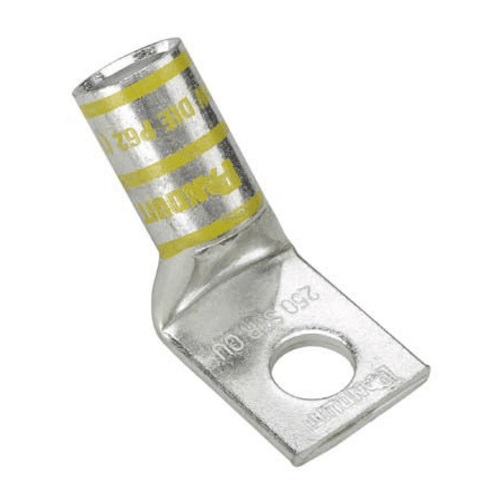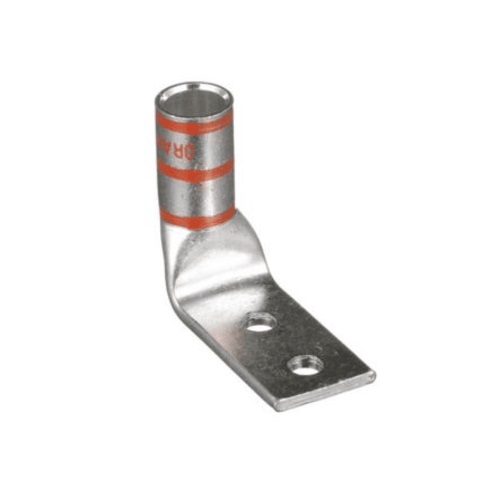Innovation in Bent Lugs: Meeting Today's Challenges
In electrical installations across industries, space constraints and new regulations have transformed how professionals approach terminations. Manufacturing teams now navigate critical challenges as updated specifications for 45° and 90° bent lugs reshape installation requirements and compliance protocols. Recent UL standard revisions aren't just procedural updates—they fundamentally alter how electrical infrastructure must be designed and implemented.
Panduit precision-engineered Bent Lug solutions directly address these regulatory shifts while delivering superior performance in demanding industrial environments. Our advanced connector technologies accomplish two critical objectives simultaneously: maintaining system integrity while meeting the latest UL certification standards—knowledge that electrical contractors, industrial engineers, and OEMs need as they navigate today's developing compliance landscape.
Engineering Challenges in Bent Lug Design
Creating high-performance Bent Lugs requires overcoming several complex engineering challenges:
- Material Stress Distribution
- Precise bend radius calculations to maintain conductor integrity
- Optimized current-carrying capacity ensures reliable performance despite geometric modifications
- Manufacturing Precision
- Automated production processes ensuring consistent bend angles (±1° tolerance)
- Rigorous Quality control measures exceeding NEMA, NEBS and UL requirements
- Installation Efficiency
- Ergonomic design simplify work in tight spaces, reducing installation time
- Reduced installation torque requirements prevent conductor damage
- Optimized barrel length for maximum conductor engagement for better electrical connection
Panduit Technical Differentiation
What sets our Bent Lugs apart is our commitment to precision and quality:
Precision Engineering
- Computer-simulated stress analysis for each configuration identifies potential failure points before production
- Documented pull-out strength testing ensures connections maintain integrity under real-world conditions
Manufacturing Innovation
- Automated quality verification at multiple production stages ensures consistency
- Complete lot traceability provides comprehensive quality documentation for critical applications
Performance Metrics
Panduit Bent Lugs deliver measurable advantages in critical performance areas:
- Electrical Performance
- Maximum temperature rise: <30°C at rated current
- Benefit: Lower operating temperatures extend equipment life and reduce the risk of insulation failure
- Contact resistance: <50 microohms
- Benefit: Minimizes energy loss, reduces operating costs, and prevents trouble spots that can lead to connection failure
- Maximum temperature rise: <30°C at rated current
- Mechanical Reliability
- Torque retention: >95% after thermal cycling
- Benefit: Prevents connection loosening over time, eliminating the need for maintenance retightening and reducing downtime risks
- Vibration resistance: Meets NEMA class 3, ABS and NEBS requirements
- Benefit: Safeguards connection integrity in high-vibration environments like manufacturing floors or transportation applications, preventing expensive failures and safety hazards
- Torque retention: >95% after thermal cycling




Real-World Applications
Our engineering approach addresses specific installation challenges directly addresses specific installation challenges that professionals face daily. When installing switchgear, technicians often struggle with tight clearances and complex cable routing. Our Bent Lugs optimize clearance in NEMA 1/3R enclosures while maintaining compatibility with standard bus bar configurations.
This allows installers to maintain proper phase-to-phase spacing requirements without compromising accessibility. Motor connections present their own challenges, particularly with vibration and alignment. Panduit Bent Lugs reduce stress on motor terminal boxes while improving alignment with factory terminals. Enhanced vibration resistance prevents gradual loosening that can lead to disastrous motor failures, a common and costly problem in industrial settings.
For transformer terminations, Bent Lugs accommodate various mounting orientations while maintaining required insulation clearances. This flexibility allows electricians to optimize cable routing for better space utilization and improved airflow, improving system cooling and reliability.
Future Development
Panduit engineering teams continue advancing bent lug technology through:
- Development of new configuration options and expanding SKUs to address emerging application/industry needs
- Integration of smart manufacturing processes as Panduit expands manufacturing facilities worldwide
Industries frequently deal with space-constrained electrical panels, switchgear, and distribution equipment. Our Bent Lugs allow for proper cable routing and termination in tight spaces while maintaining the required bend radius specifications and proper clearances reassuring both safety and reliability across the installation's lifespan.
As you plan your next infrastructure projects, connect with an expert or explore more product offerings, thought leadership and beyond at www.panduit.com/power-grounding.



